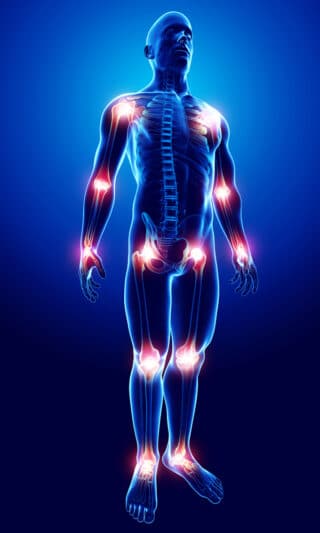
Advanced Spine and Pain – Stafford
450 Garrisonville Road
Suite 109
Stafford, VA 22554
Advanced Spine and Pain – Fairfax
11230 Waples Mill Road
Suite 114C
Fairfax, VA 22030
Advanced Spine and Pain – Woodbridge
2296 Opitz Boulevard
Suite 210
Woodbridge, VA 22191
Advanced Spine and Pain – Arlington
1715 N. George Mason Drive
Suite 102
Arlington, VA 22205

More Pain Management & Rehabilitation Articles
Intrathecal Pain Pump for Chronic Pain

Who is a good pain pump candidate? Or who is a good candidate to consider for an intrathecal pain pump trial?
The answer to the question is simple, but essentially encompasses a variety of patients dealing with multiple diagnoses associated with chronic pain. The ideal candidate for a pain pump trial is someone who has chronic pain and has tried different medication and non-medication treatments for the chronic pain without significant relief or resolution of their pain syndrome. These treatments can include physical therapy, occupational therapy, acupuncture, massage, injections, nerve blocks and ablations.
In addition, many patients have had prior surgeries that were intended to treat their pain, but over the years despite surgical intervention their pain has worsened or remained the same and they come seeking ways to increase or maintain their functionality without having to rely on oral pain medications that have been started and escalated throughout their entire treatment process.
What is the process of moving forward with a pain pump implant? How do patients know if it is the right therapy for them?
One of the unique aspects about the pain pump is that patients get to “test drive” the therapy first before deciding to move forward with the permanent implant. The “test drive” is also called the pain pump trial and is done in the office under fluoroscopy. The medication is injected directly into the patient’s intrathecal space as a single shot bolus and patients leave the office after the procedure with a pain diary to document their pain relief and their duration of pain relief.
Typically patients will know immediately after the trial whether or not their chronic pains have been addressed with the procedure and they are seen in follow up within one week after the procedure.
Intra-operatively and post-operatively what can patients expect?
The surgery for the pain pump implant is done in an ambulatory surgical center and is an outpatient surgery. Post-operatively, the patient is seen in the office weekly for adjustments until they begin to experience relief equivalent to their trial experience. This may take 4-6 weeks and depends on a multitude of factors that is unique for each patient.
There are also a multitude of options after the pump is implanted that can be customized for each patient. For example, the pump can be programmed to either allow the patient to self-administer extra doses throughout the day during times of breakthrough pain or if a patient knows when they typically have breakthrough pain the pump can be programmed to automatically deliver boluses during those times.
Ultimately the goal of the pain pump is to improve the patient’s ability to function and participate in daily activities that may have previously been limited by their chronic pain state.
Other Articles You May Find of Interest...
- How to Promote Bone Fracture Healing? Tips for Faster Healing
- Managing Chronic Back and Neck Pain
- Pervasiveness Of Pain
- Effective Solutions for Lower Back Arthritis: Medial Branch Blocks and Radiofrequency Ablation
- Spinal Compression Fracture Treatment Options
- Hiatal Hernia: A Common Cause For Heartburn
- Prevent and Treat Osteoporosis

















